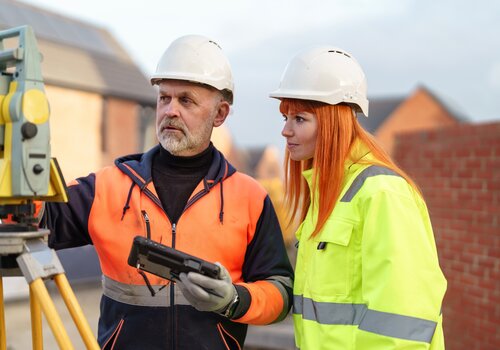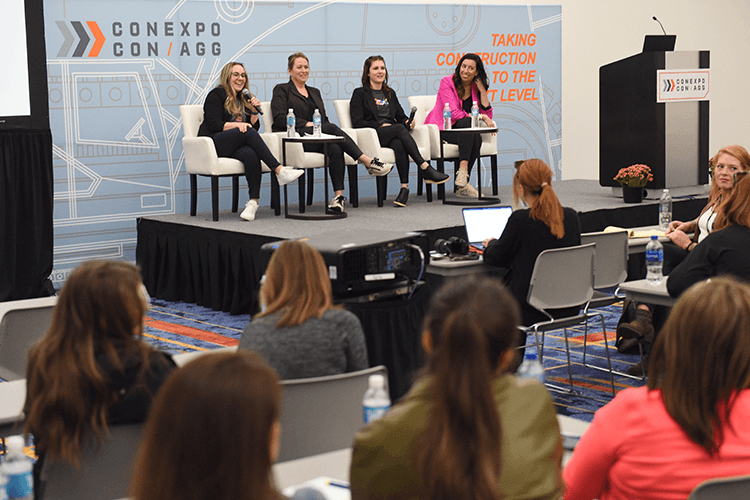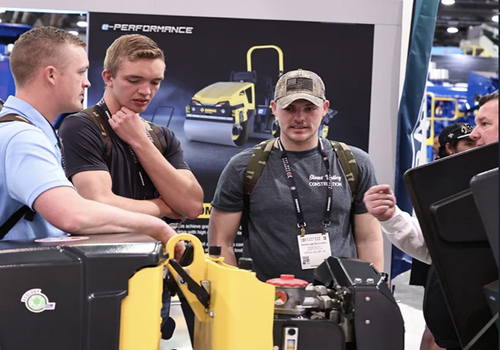You’re on a jobsite. A foreman with 30 years of experience is instructing a recent trade school grad on the placement of rebar. The younger worker is asking, “Can I check that in the app on my phone?” The foreman stares at the screen.
Moments like this happen more than you expect. As construction companies juggle retiring Baby Boomers, Gen X leadership, Millennials and Gen Z entering as the “new toolbelt generation,” the ability to get these groups to work together well has become a competitive edge.
Building generational bridges enables your most experienced hands and your youngest crews to both feel empowered and productive.
WHERE GENERATIONAL TENSION CAN SHOW UP (AND WHAT IT COSTS YOU)
Generational friction can come in subtle forms.
Communication style mismatch: Older workers may prefer face-to-face training, younger ones may lean on digital tools.
Technology adoption gap: New workers push for software, apps or drones; long-tenured staff may resist change. Gaps in tech fluency between generations can slow adoption or create friction unless companies build a culture of mutual learning.
Expectations around flexibility and benefits: Younger workers often value flexibility and work-life balance; older generations may prioritize stability and legacy.
If not addressed, the generational split can lead to miscommunication, lower morale, turnover, and safety or quality mistakes. Understanding what motivates each generation helps tailor leadership and retention strategies.
MULTI-GENERATIONAL COLLABORATION WORK ON YOUR JOBSITE
Here’s how contractors can bridge generational gaps and build high-performing, integrated teams.
Pair older and younger workers in structured mentoring rotations: Don’t just drop them into the field together. Create a formal pairing or “buddy system” where veteran operators mentor younger crews on craft, while younger workers help show digital tools, apps or drones. In that two-way mentor exchange, both parties learn.
Design communication plans that mix modalities: Use a blend: in-person toolbox talks, paired with curated digital updates or alerts. Make sure messages are repeated across formats so no one misses or misinterprets instructions because of medium preferences.
Offer training in hybrid styles: Some workers absorb best by hands-on, others by watching videos or reading schematics. Use microlearning modules, videos and augmented reality, alongside traditional instruction. Remember: bridging the generational tech gap in construction often means meeting every worker where they are.
Create a shared mission and language: Circulate visible goals, values and “why this job matters.” When everyone, regardless of age, knows they’re building something meaningful and has a shared language, collaboration is easier. Think about your company culture, safety habits and benefits.
Measure, celebrate and iterate: Track metrics like crew retention, defect rates or delay reduction with a generational lens: did mixed crews outperform homogeneous ones? Acknowledge and reward teams that show strong cross-generational teamwork. Use regular debriefs to surface friction and iterate.
DOING IT RIGHT IN THE FIELD
Contractors should invest in cross-generation training on new tech, which is helping to attract younger workers to the trades. For example, when rolling out a new machine interface or telematics tool, offer “train-the-trainer” sessions where a mixed-age group learns together. That ensures the younger staff can support older ones without alienating either side.
Overcoming the Skepticism: Tips for Leaders:
-
Lead with humility. Acknowledge that no one group “knows it all.” Encourage openness and curiosity.
-
Listen actively. Ask each generation: “What part of this process is working? What confuses you?”
-
Frame change as evolution, not replacement. When you introduce new tech or process, show how it augments, not replaces, existing craft.
-
Don’t force uniformity. Some older workers may never embrace mobile alerts; that’s okay. Let them have a trusted observer or printed copy as a backup.
-
Offer flexibility where you can. While you can’t grant full remote work in the field, offering shift swaps, partial administrative flexibility, or extra rest breaks may appeal to younger workers without upending operations.
WHY THIS MATTERS MORE THAN EVER
Because in 2025 and beyond you may have five generations working side by side: Traditionalists through Gen Z.
Infrastructure demand (IIJA/BIL funding) will increase competition for talent, so contractors who create inclusive, collaborative cultures will win bids and retain crews.
Tech adoption (drones, AI tools, telematics) is accelerating; you can’t leave half your workforce behind. The cost of turnover is high. Losing even one mid-level foreman or skilled trade due to generational friction is expensive in time, training and recruiting.
Generational differences don’t have to be a barrier; they can be a strength. The legacy knowledge of experienced crews and the energy, tech fluency and fresh perspectives of younger staff can, when properly bridged, fuel innovation, reliability and continuity on the jobsite.
At CONEXPO-CON/AGG 2026, attend the session Leading in a New Era to learn how construction leaders can bridge generational gaps, blend legacy with innovation and foster collaboration to build adaptable, future-ready teams that honor the past while driving the industry forward. Register today.
Photo credit: SHUTTERSTOCK/IRENE MILLER












